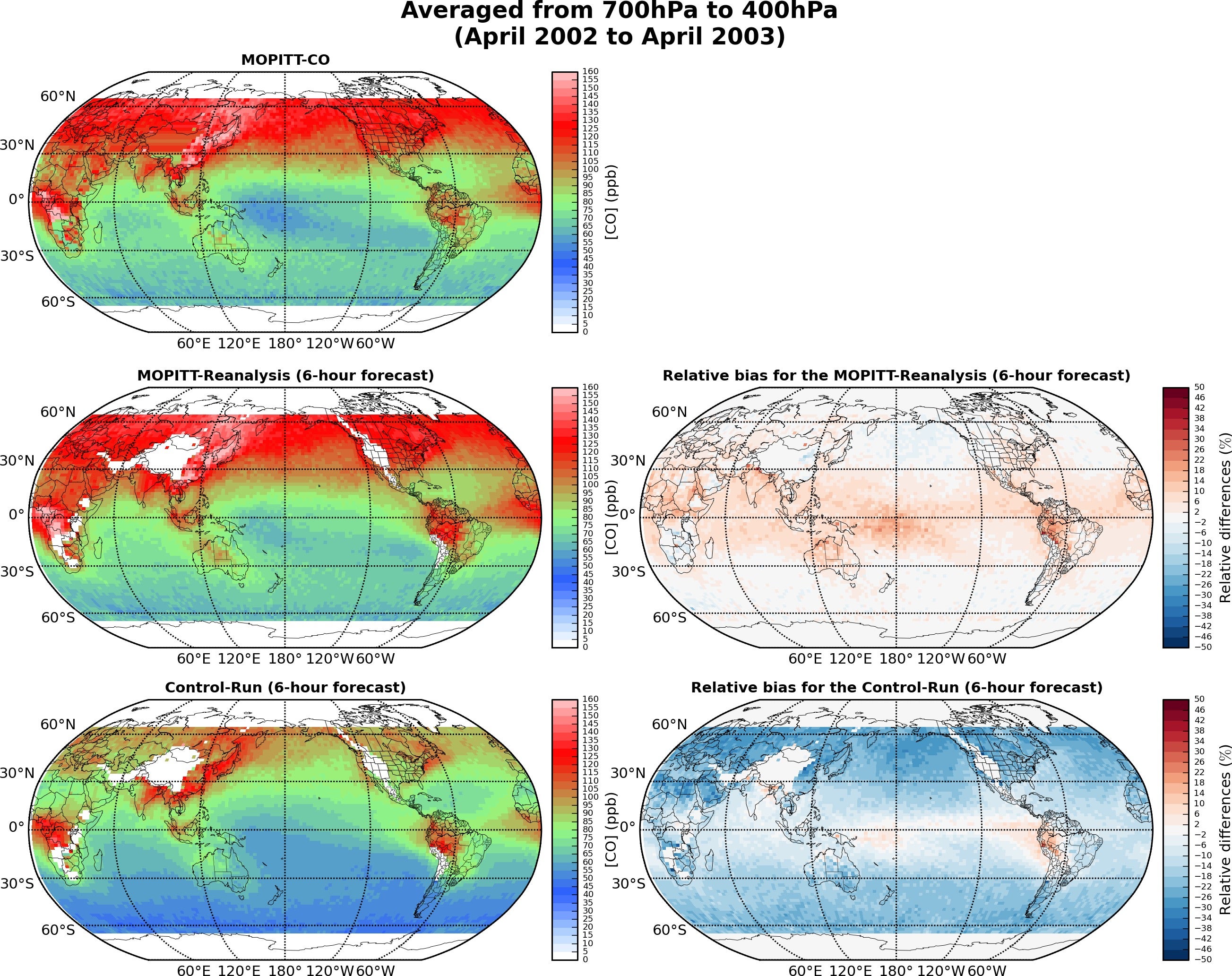CAM-chem Data Assimilation
We are developing a framework which combines satellite observations, chemical transport models and data assimilation techniques into a “chemical weather” analysis and estimation system similar to that used for weather forecasting. The data assimilation system uses a variety of satellite products of atmospheric composition with a particular focus on Terra/MOPITT CO and Met-Op IASI CO and O3. Current development includes the assimilation of NUCAPS CrIS CO and TROPOMI CO product as well as MODIS AOD. Current research uses the global Community Atmosphere Model with Chemistry (CAM-Chem). Data assimilation is used to integrate the different observational and modeling capabilities and to provide an optimal estimate of the 4D-distribution of atmospheric pollutants. We use the Data Assimilation Research Testbed (DART) developed at NCAR, which is a community software tool designed for conducting data assimilation studies over a variety of models and observations. CAM-chem with DART, assimilating MOPITT CO, has provided a number of insights on atmospheric composition: [Gaubert et al., JGR, 2016] and [Gaubert et al., GRL, 2017].
Global Reanalysis of CO Observations

A global reanalysis of CO observations is based on the joint assimilation of conventional meteorological observations and Measurement of Pollution in The Troposphere (MOPITT) multispectral CO retrievals. Under the Data Assimilation Research Testbed (DART) framework, the assimilation is done using an Ensemble Adjustment Kalman Filter technique (EAKF) within the Community Atmosphere Model with Chemistry (CAM-Chem). The first focus has been to assess improvements when the CO distribution is constrained by the assimilation, and investigate the resulting impacts to the chemical system and the non-linear chemistry-Earth system interactions in the global coupled full chemistry-Earth system Community Earth System Model (CESM). To do so, results for two twin assimilation experiments has been done for one year: 1) Control Run, where only 6-hourly meteorological observations are assimilated; and 2) MOPITT-Reanalysis, where MOPITT V5J CO profiles are jointly assimilated with meteorological observations. Diagnostics of MOPITT data assimilation demonstrate an efficient assimilation and a well-balanced global error budget. The evaluation has also been completed by four datasets of independent observations. Overall, the best improvements are found when the simulation errors are the greatest (i.e., during spring) and when the MOPITT V5J observations are the most sensitive and accurate (i.e., in the lower/middle troposphere over land). This is especially the case across the northern hemisphere (NH), where we find improvements in the bias and variability of the simulated CO and is illustrated to the right [Gaubert et al., JGR, 2016].